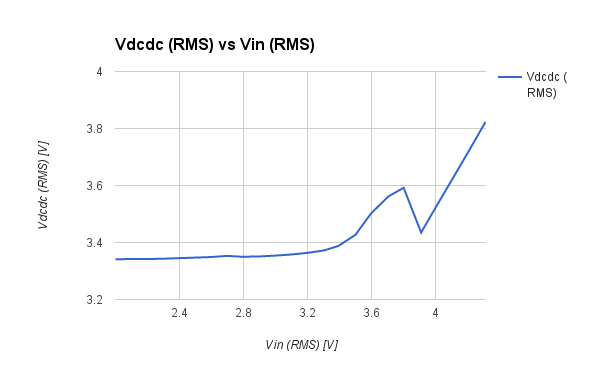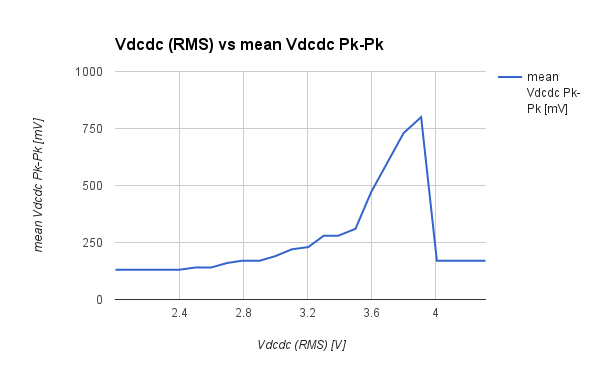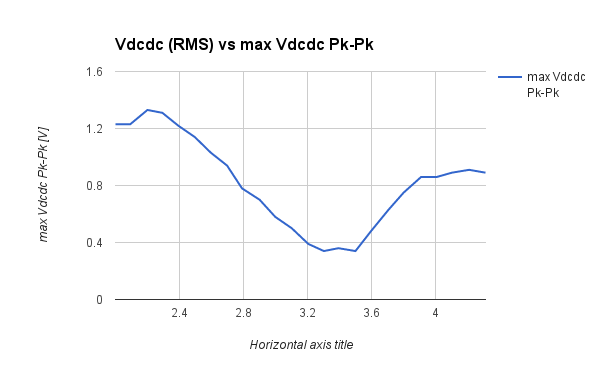Other Parts Discussed in Thread: CC1310, TIDA-00484, TPS63051, TPS82740B
I have a produced board with CC1310 running on 868MHz that uses TPS61291 as the PSU. Board is primarily powered from a LiIon battery pack with its own charging circuit. I used reference design
TIDA-00484 for the PSU. Mean consumption is 10mA with peaks @25mA
RF matching is done with Johanson's balun and a chip antenna is used. SW is Contiki OS. There's a gateway that uses same board.
I have an issue running this setup while input voltage is in range 3.4-3.9V. board itself is booting up and operational [I get debug data over UART]. Internal monitoring, ADC, I2C line work fine, but I don't get any transmission out of it. I've tested with a bench PSU over the whole range :
In attached schematic there's a voltage divider. I've tested without it – it doesn't affect the measurements.
I guess that step down somehow produces a lot of noise with harmonics with enough power to disrupt normal RF operations. This feels like self oscillation to me.
My question why this happens only in the middle range of the chip voltage and how to fix it. power.pdf




